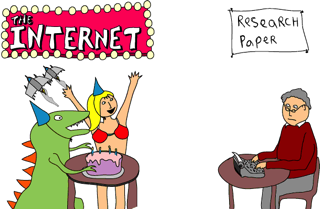
Lack of motivation plagues even the brightest and most ambitious at times, especially when we have so many digital distractions these days. But you can trick your brain into becoming more motivated and it will hardly even notice. You simply need to know a little about the neurology of motivation and procrastination.
A key brain chemical, or neurotransmitter, involved in motivation is dopamine. It also happens to be the key neurotransmitter involved in bad habits and addiction, including digital addictions to Facebook, Twitter, and other social media. We need plenty of dopamine to stay motivated and feel good about our accomplishments and ourselves. Otherwise we lapse into procrastination.
Every time you check your Facebook (or smoke a cigarette, gamble, take a drug, or engage in any other addiction), the pleasure center of the brain, called the nucleus accumbens, is flooded with dopamine and hence feelings of pleasure. Dopamine also encourages motivation to continue that feel-good behavior.
This system doesn’t exist simply to sabotage us with Netflix binge watching addictions. We are designed to find pleasure in certain activities that ensure survival of our species, such as eating, love, sex, and having fun (positivity is good for immune and brain health). However, these rewarding pleasures require, to varying degrees, a certain amount of work, attention, and time for modest releases of dopamine.
An addictive habit, however, can release two to 10 times the amount of dopamine a natural one does. In other words, jumping on to Facebook is going to give you a quicker and easier dopamine “high” than, say, building a fire so you can hang out with your tribe and cook that day’s catch.
In an attempt to maintain balance, the brain’s receptors lose tolerance to dopamine so that you get less of a high. However, dopamine has also wired your brain to connect the stimulus with the feelings of pleasure. As a result, compulsion builds with tolerance.
As the compulsion for the bad habit grows, the increased dopamine demand saps your motivation to engage in more positive but less extreme dopamine-boosts. If you have ever gotten sucked into binge watching a Netflix series over taking a walk on a sunny day, you know what I’m talking about.
You also probably know that willing yourself into better behavior often fails you and makes you feel even worse about yourself — dopamine is tied to self-esteem and when yours is running low, so is your sense of self-worth.
It’s not as hopeless as it sounds. The key is to redirect your brain’s dopamine system with baby steps that develop new pathways of communication so you think, feel, and behave differently. This is called plasticity. How? Pick a positive action small enough you know you can accomplish it. Trouble sticking to an exercise routine? Commit to one pushup a day. Wish you would work on that book? Write one paragraph, or even one sentence a day. Want to meditate? Start with one minute, or maybe a few minutes of reading.
The magic isn’t in how much you do, but through the feeling of accomplishment. This sends rewarding dopamine boosts to the areas of your brain that need it the most so positive plasticity can develop. After you have been doing that one pushup or that one minute of meditation, increase it to two, and so on. The goal is to feel a rewarding sense of accomplishment and continue building on that in small, achievable ways.
Symptoms of low dopamine activity include lack of motivation, struggles with procrastination, inability to find pleasure in things you used to enjoy, fatigue, mood swings, memory deficits, addiction, feelings of low self-worth, bouts of rage, and other symptoms.
Low dopamine can have its roots in chronic health imbalances (gut, immune, hormonal, etc.) or in neurological imbalances, such as brain development disorders, brain degeneration, brain injury, or other brain-based mechanisms.
Ask my office functional neurology strategies to help you improve your dopamine activity so you can get stuff done, enjoy life more, and feel better about yourself.






